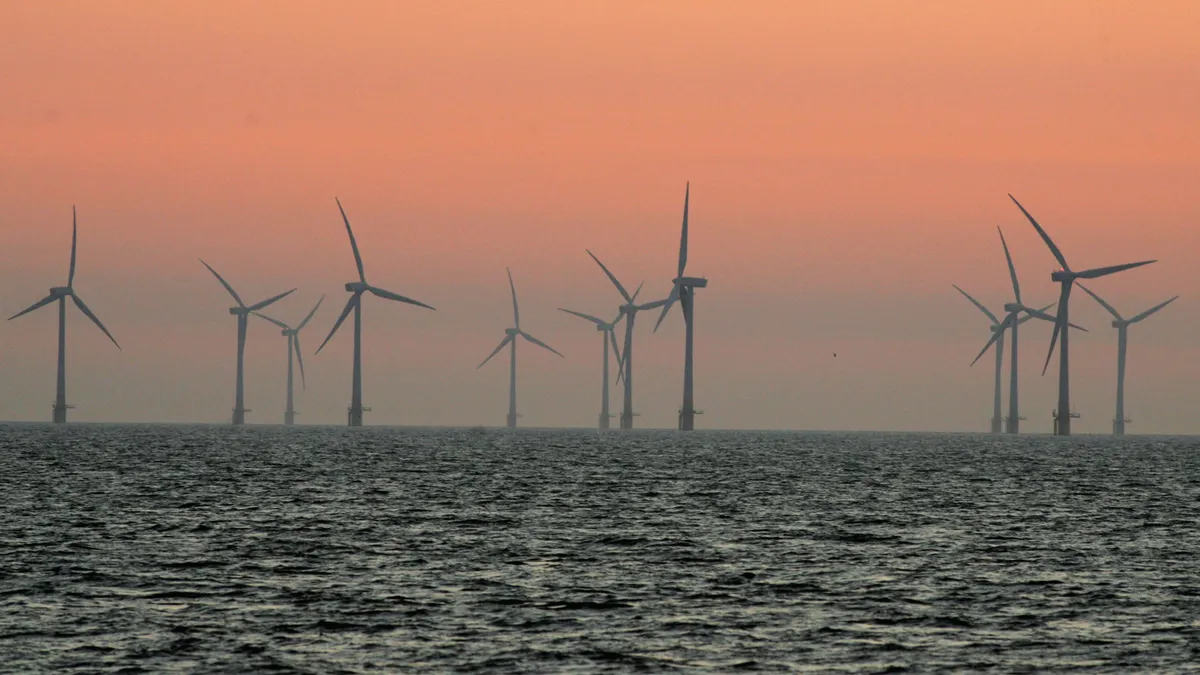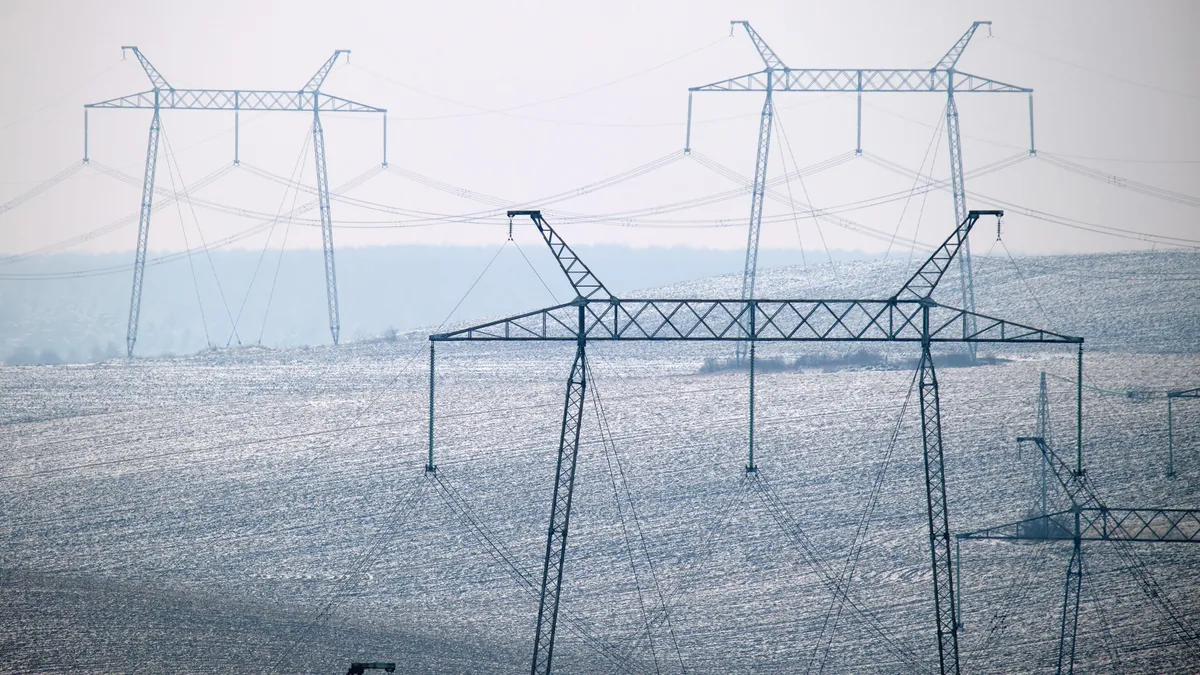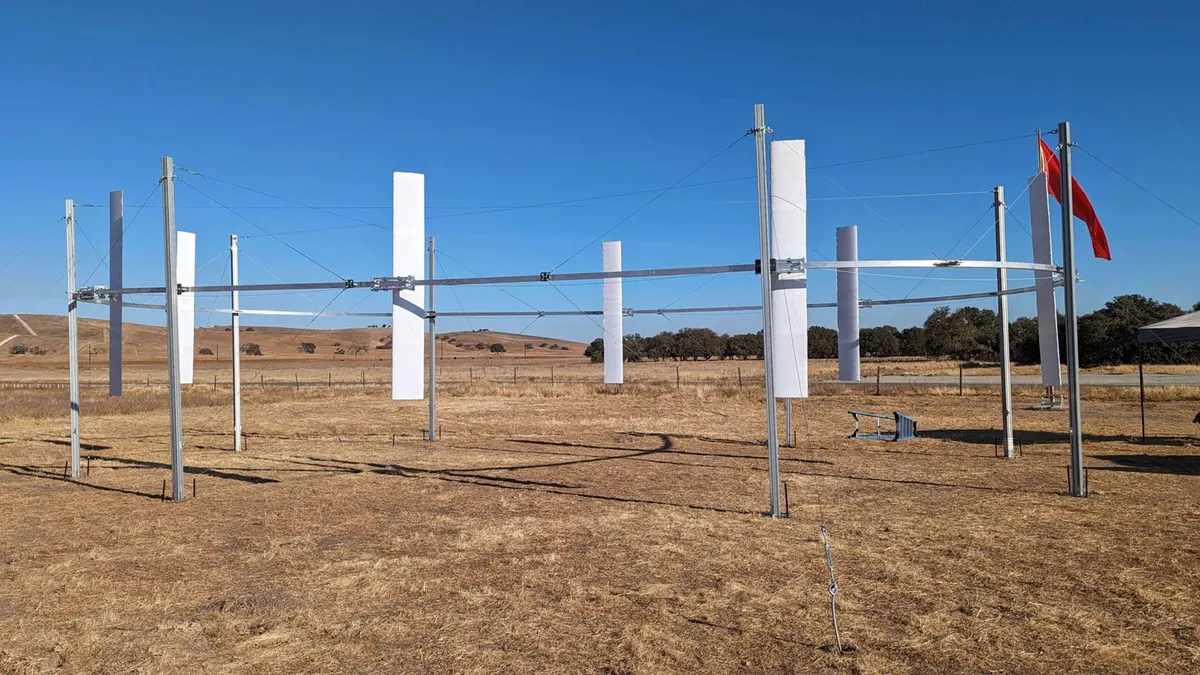The following is a contributed article by Chad Marriott, a partner at Stoel Rives who leads the firm's wind energy subgroup, and Cherise Gaffney, a partner in the Environment, Land Use and Natural Resources practice group at Stoel Rives.
As the White House works to meet its goal of deploying 30 gigawatts (GW) of offshore wind by 2030, it is worth looking at whether the West Coast states are positioned to help. If the East Coast is sprinting a 100-meter dash to put steel in the water to meet the Biden administration's goal, the West Coast is running the 110-meter hurdles. Many sponsors are in both races, but the evidence suggests that the West Coast will need to clear some additional obstacles to make a notable contribution to the 30 GW goal. A practical look at the process and hurdles suggests that East Coast states have a clear head start on policy and infrastructure objectives that are jumpstarting the industry.
The joint announcement in May by California's Gov. Gavin Newsom, the White House, the Bureau of Ocean Energy Management (BOEM) and the Department of Defense was a positive step forward that many in the industry feel was long overdue. The agreement identified two potential Wind Energy Areas for floating offshore wind development in California – one within a 399-square mile area off the Central Coast northwest of Morro Bay (the "Morro Bay 399 Area") and the other northwest of Humboldt Bay on the North Coast (the "Humboldt Call Area"). However, based on BOEM estimates, even if the full capacity of the two areas is ultimately built out, California would contribute only 4.6 GW – or about 15% – of the Biden administration's goal.
To date, no call areas have been announced by BOEM for the waters off the Oregon and Washington coasts and, except for the request filed by Principle Power, Inc. in 2013 for the WindFloat Pacific demonstration project in Oregon that did not go forward, no unsolicited lease requests have been submitted either. Nevertheless, an intergovernmental task force led by BOEM has recently reengaged with state and federal agencies in Oregon. On June 23, the Oregon governor signed H.B. 3375, which would establish a goal "to plan for the development" of up to 3 GW of floating offshore wind projects in federal waters off the Oregon coast by 2030.
Challenges ahead
Given the Biden administration's push for 30 GW by 2030 and the excellent wind resource in the area, it is possible that BOEM will announce one or more call areas in federal waters off the Oregon coast in the next 6-12 months, but given the unique nature of the electric grid in the Pacific Northwest it is not clear what the path to market (i.e., offtake) for the projects will be or how likely it is that projects will begin construction before the end of the decade.
It is important to remember that near-shore deep waters on the West Coast will require floating structures (as opposed to the monopile or jacket foundations that dominate on the East Coast); and floating structures present both challenges and opportunities for the industry.
The challenges are simple to identify but difficult to address. Two of the challenges are: (1) establishing a manufacturing and supply chain backbone for critical components (e.g., tension leg and semi-submersible platforms, spars, towers) and nacelle assembly facilities in order to drive costs down (the supply-side of the equation); and (2) defining a viable route to market for gigawatts of new projects (the demand-side of the equation).
In particular, if California is serious about using offshore wind to help satisfy the state's goal of delivering 100% of retail electricity from renewable and zero-carbon resources by 2045, then the state must focus on the fundamentals for developing both the supply- and demand-sides of the equation. In the end, manufacturing capacity will follow stable, long-term policy support and states' demand for offshore wind.
Governor Newsom's California Comeback Plan would include $20 million in funding to support the industry, including $11 million in potential upgrades at the Port of Humboldt and $1.5 million for an engineering and design-build study for a project in the Humboldt Call Area. Separately, the California legislature is debating AB 525, which would direct state agencies to develop a strategic plan that includes the identification of port space and land-based infrastructure needs.
While these are positive steps that demonstrate political will, the legislature will need to speed up passage and implementation if the state wants to clearly project a "we're ready to run" message. As in Oregon, both the Morro Bay 399 Area and the Humboldt Call Area need purpose-built facilities to support the industry.
With floating turbines already deployed in Europe and Asia, many developers believe the goal should be to jump immediately to 1 GW+ project sizes on the West Coast, especially given California's target of 100% clean energy by 2045. Others see 300-400 MW project sizes as more realistic in the 2030 timeframe. At the core of the debate over project size (apart from supply chain requirements) is that the West Coast states have not yet answered the question "What is offshore wind worth to us?"
West Coast opportunities
On the West Coast, floating offshore wind provides several key opportunities, including: (1) the ability to site turbines farther offshore; (2) high production during the shoulder hours of the morning and evening (which helps address the "duck curve" in California); and (3) turbines with high capacity factors that provide regulators with an alternative to vast quantities of other renewables assets with lower capacity factors. However, these opportunities need to be coupled with firmly established state procurement goals.
Currently, none of the West Coast states have established offshore wind procurement targets that can guide agency decision making or provide developers certainty with respect to offtake structure, contract term, or price. Many East Coast states, in contrast, have established targets by executive order or through the legislature and coalesced around two offtake models – power purchase agreements and offshore renewable energy credits.
Banks are eager to get into the U.S. offshore wind market, and their experiences in the European and Asian markets have provided a baseline understanding of the risks associated with floating wind. But without a clear line of sight on bankable long-term offtake contracts, the procurement goals (when established) may not be realized.
Initial projects on the West Coast will clearly face greater levels of complexity on all fronts (e.g., supply chain, construction, permitting) and will encounter growing pains that subsequent projects will not. As we have learned in permitting the nation's first wave energy test facility located in waters off Newport, Oregon, even "green hat" offshore renewable projects on the West Coast can take the better part of a decade to authorize. This is primarily because our nation's environmental statutes abhor uncertainty even more than they abhor adverse environmental impacts.
The Biden administration and coastal governors can help overcome permitting hurdles, in part, by directing federal and state fish, wildlife and other natural resources agencies to rely on the best available science and data, to extrapolate from data in other industries and regions, and to use post-construction monitoring and adaptive management to address any lingering uncertainties.
These tools will help avoid unnecessary delays without compromising robust scientific evaluations of proposed projects consistent with state and federal requirements. Furthermore, top-down direction from within the resource agencies to make timely permitting of offshore renewables an agency mandate will spur creative solutions and help drive the nation's collective effort to meet the 30 GW goal by 2030.
One particular area where the Biden administration can make meaningful improvements in the timeline for authorizing offshore wind projects is in the federal government's implementation of the National Environmental Policy Act (NEPA). NEPA doesn't dictate specific environmental outcomes, but it does require federal agencies to evaluate environmental and socio-economic impacts of proposed actions and provide the public with opportunities to review and comment on them.
In the case of offshore wind projects in federal waters, however, BOEM conducts NEPA three times: before issuing a lease, approving a site assessment plan (SAP), and authorizing work to begin under a construction and operations plan. Each review can take years to conduct and significant effort by federal and state agencies, the project proponent and the public, and invites new litigation.
A Trump administration rule limiting the length of environmental impact statements and imposing deadlines might create efficiencies, but that rule is being examined by the Biden administration for potential withdrawal or modification, creating additional uncertainty for major infrastructure projects like offshore wind. In addition, state environmental review statutes like the California Environmental Quality Act can add a substantial layer of process and delay.
This framework of multiple NEPA and state environmental evaluations results in a 7-10 year timeline for full authorization and presents significant hurdles for meeting the administration's 30 GW goal by 2030.
A better way?
In light of that goal, we have to ask: Is there a smarter, more efficient way to fully appreciate the potential consequences of offshore wind projects under NEPA and state environmental review statutes? A recent D.C.Circuit Court of Appeals opinion may provide a partial answer.
In Fisheries Survival Fund, et. al v. Haaland, the Court found that BOEM's issuance of a lease to Statoil (now Equinor) for an offshore wind project off the coast of New York did not trigger NEPA because BOEM retained the right to disapprove the SAP and COP following subsequent NEPA review of those phases. Consistent with this decision and BOEM's ability to disapprove activities at later stages, it makes sense for BOEM to forego NEPA evaluations at the lease stage.
As the Haaland decision underscores, leases do not authorize testing or construction activities, so there is no risk to the environment at this stage. BOEM could also work with federal and state resource agencies to streamline SAP review and permitting through programmatic reviews that "pre-permit" typical assessment activities in the West.
Ultimately, if the Biden administration is serious about meeting its 2030 goal, it will need to be creative in order to clear the racetrack of unnecessary hurdles, inefficiencies, and invitations for process-oriented litigation.
It is clear that the industry is working hard to make floating offshore wind a reality on the West Coast. The first projects could begin construction before the end of the decade. However, the view from the starting line of the 30 GW by 2030 race suggests that the Biden administration and its state counterparts will need to put the wind at the industry's back to get significant steel in West Coast waters by 2030. When there are solid procurement targets, an adequate supply chain, and an efficient permitting path, West Coast offshore wind projects will be running the 100-meter dash, too.
Correction: A previous version of this article had an outdated description of the status of Oregon bill HB 3375. It was signed by the governor on June 23.





















